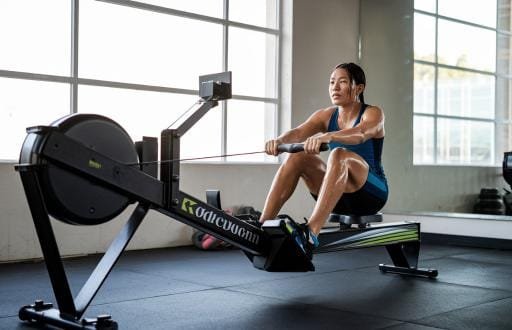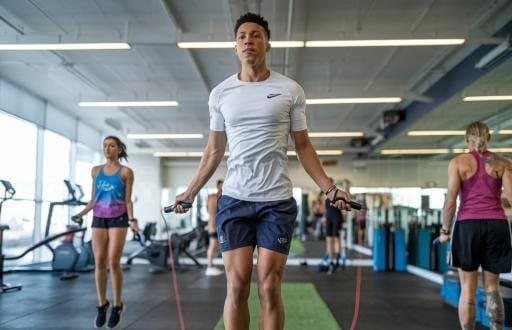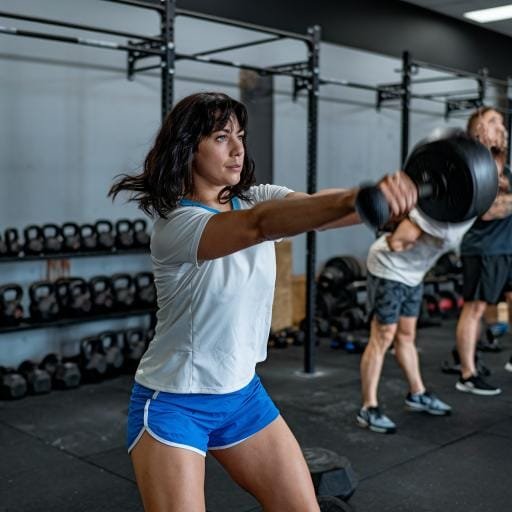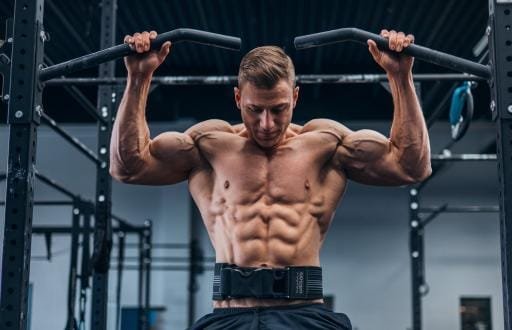In the dynamic landscape of cardiovascular fitness equipment, the rowing machine emerges as a paragon of full-body conditioning, offering an intricate symphony of movement that orchestrates both strength and endurance development. Unlike its conventional counterparts, this remarkable piece of equipment harnesses the power of fluid motion to catalyze unprecedented levels of caloric expenditure while simultaneously fostering muscular development across multiple planes of movement.
The Biomechanical Ballet of Rowing
The rowing stroke, a seamless integration of power and precision, orchestrates a complex interplay of muscular engagement that few other exercises can rival. This harmonious sequence, known as the rowing stroke, comprises four distinct phases:
The Catch
- Body compressed
- Shins vertical
- Arms extended
- Core engaged
The Drive
- Leg Press
- Explosive quad engagement
- Gluteal activation
- Calf recruitment
- Back Swing
- Posterior chain activation
- Core stabilization
- Spinal erector engagement
- Arm Pull
- Latissimus dorsi recruitment
- Rhomboid activation
- Bicep engagement
The Finish
- Extended leg position
- Slight back lean
- Elbows tucked
- Core braced
The Recovery
- Controlled return
- Measured slide
- Sequential unwinding
- Preparation for next stroke
Metabolic Mastery Through Motion
Energy System Engagement
The rowing machine uniquely activates multiple energy systems:
- Phosphagen System
- Explosive power development
- Short-burst energy production
- Neural recruitment enhancement
- Glycolytic System
- Sustained power output
- Lactate threshold improvement
- Metabolic conditioning
- Oxidative System
- Aerobic capacity development
- Fat utilization optimization
- Endurance enhancement
Weight Loss Acceleration
Caloric Combustion
The rowing machine’s full-body engagement catalyzes remarkable caloric expenditure:
- High-Intensity Intervals
- Up to 800 calories per hour
- Enhanced EPOC effect
- Metabolic rate elevation
- Steady-State Training
- 400-600 calories per hour
- Fat oxidation optimization
- Cardiovascular enhancement
Programming for Success
Workout Structures
- Beginner Protocol
- 5-minute warm-up
- 20 minutes steady-state
- 5-minute cool-down
- Focus on form mastery
- Intermediate Progression
- 10-minute warm-up
- 4x500m high-intensity intervals
- 2-minute recovery between sets
- 5-minute cool-down
- Advanced Configuration
- 15-minute warm-up
- 8x250m sprints
- 1-minute recovery
- 10-minute steady-state finish
Conclusion
The rowing machine stands as a testament to the power of integrated movement in achieving comprehensive fitness and weight loss goals. Its unique ability to simultaneously challenge cardiovascular endurance, muscular strength, and metabolic efficiency makes it an unparalleled tool for physical transformation. By embracing the technical precision and physiological demands of rowing, practitioners can unlock new levels of fitness while efficiently approaching their weight loss objectives.
Frequently Asked Questions (FAQ)
Q: How often should I use the rowing machine for optimal weight loss?
A: Start with 3-4 sessions per week, allowing for adequate recovery. As your fitness improves, you can increase frequency while varying intensity and duration.
Q: What’s the ideal duration for a rowing workout?
A: Beginners should aim for 20-30 minutes, while advanced users can extend sessions to 45-60 minutes. Quality of movement always trumps duration.
Q: Can rowing help target belly fat specifically?
A: While spot reduction isn’t possible, rowing’s high caloric burn and core engagement contribute to overall fat loss, including abdominal fat.
Q: Should I adjust the resistance for different workouts?
A: Yes, vary resistance based on your workout goal:
- Lower resistance (3-5) for technique work and endurance
- Medium resistance (5-7) for general conditioning
- Higher resistance (7-10) for power development
Q: What should I eat before and after rowing?
A: Pre-row: Light carbohydrates 1-2 hours before
Post-row: Protein and carbohydrates within 30 minutes
Hydration: Maintain throughout training
Q: How can I track my rowing progress?
A: Monitor key metrics including:
- Split times (time per 500m)
- Total distance covered
- Stroke rate
- Heart rate
- Power output
- Caloric expenditure
Q: Is rowing suitable for beginners?
A: Absolutely! While technical mastery takes time, proper instruction and gradual progression make rowing accessible to all fitness levels.
Remember, the journey to mastering the rowing machine is both technical and transformative. Focus on form before intensity, respect the learning curve, and trust in the process. As your technique improves, so too will your results, leading to sustainable weight loss and improved overall fitness.
The rowing machine offers an unparalleled combination of cardiovascular conditioning, strength development, and metabolic enhancement. By incorporating this versatile tool into your fitness regime, you’re not just choosing an exercise – you’re embracing a comprehensive approach to physical transformation that will serve you well on your journey to improved health and fitness.










